Notes on the Persian Gospel Manuscript in Georgian Script
Helen Giunashvili completed her doctoral thesis, “Personal Verbal Forms in Parthian and Early Middle Persian,” at the Institute of Oriental Studies (Institute of Oriental Manuscripts) at Saint Petersburg. Her scholarly assignments have included positions at the Hebrew University of Jerusalem, the University of Tehran, the Academy of Persian Language and Literature, the French Institute of Iranian Studies, the Sorbonne, and the National Centre for Scientific Researches. Dr. Giunashvili is currently a research associate at the Giorgi Tsereteli Institute of Oriental Studies at Ilia State University. She has published numerous scientific works dealing with different issues of Iranian-Georgian cultural-linguistic relations.
Tamar Abuladze is the head of the Department of Manuscript Preservation and Registration at the Korneli Kekelidze Georgian National Centre of Manuscripts. Her research involves codicological and philological study of medieval Georgian and Oriental scientific manuscripts; studies of Georgian, Persian, and Georgian-Persian historic documents; and Georgian-Persian cultural relations. She has written several books and catalogues, including as author Translating Activities of Vakhtang VI (Bagrationi) (Metsniereba, 1990); and as coauthor Illuminated Historical Documents in the Depositories of Georgia (Favorit Print, 2011); Georgian Manuscript Book, 5th-19th Centuries (Korneli Kekelidze Georgian National Centre of Manuscripts, 2014); and Astronomical Manuscripts in Georgia (Ilia State University Press, 2015).
Introduction
In the seventeenth and eighteenth centuries, during the Safavid dynasty’s reign in Iran (1501–1736), long-term Iranian-Georgian relations intensified, which corresponded to existing political realities.
During this period, Georgia was governed by Georgian kings who had converted to Islam and khans appointed by Persian sovereigns. However, the attitude of secular and religious leaders to their suzerains often remained formal. The Islamic influence was mostly reflected in the administrative order of East Georgia, in different fields of the country’s social and cultural life.
The attitude to Christianity maintained by the Safavids and their successors, the Afsharid sovereigns (1736–96),[1] was not standard.[2] Iran’s policy remained cautious concerning the
religious issues, as Christianity and statehood represented identical concepts in Georgia and Georgians maintained their national identity through their Christian faith. The attitude of the Iranian authorities to Christianity changed regularly in accordance with historical realities and with particularities of the strategic and political orientation of Iran within a specific period.
In this respect, the most significant event was the coronation of the King of Kartli (East Georgia) Teimuraz II (1700–62)[3] in 1744. This was held with Christian ceremonies during Nader Shah’s reign (1736–47), during which the Afsharid sovereign expressed his loyalty to the Christian vassal. This was caused by Nader Shah’s desire to strengthen his position among the ruling circles of Eastern Georgia and, to some extent, win over Christian nobles and create a stronghold in the Caucasus region.[4]
1. Persian Historical Documents at the Korneli Kekelidze National Centre of Manuscripts
Among the rich collections preserved at the Georgian National Antiquities (Korneli Kekelidze National Centre of Manuscripts, National Archive of the Ministry of Justice of Georgia), Persian historical documents (farmans and hoqms) present the most important records elucidating relations of Shi‘ite rulers with Georgian clergy, mostly with the catholicoses (high priests) of East Georgia (Kartli and Kakheti principalities). These Persian deeds comprise valuable data on the rights of catholicoses (on property, in religious matters, in participation in state issues, etc.).[5]
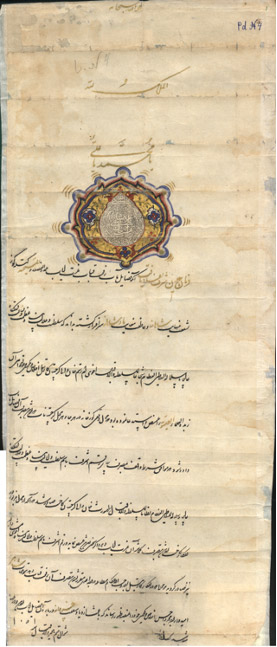
Figure 1. Pd-4, 1642, Illuminated Documents, p. 168. Reprinted by permission of the Korneli Kekelidze National Centre of Manuscripts.
The deed (farman) issued by Shah Safi I (1611–42) in 1642 addressed to the vali (vassal and executor) of Kartli Rostom/Rostom Khan (r. 1632–58) and vali of Kakheti Teimuraz (r. 1606–48) is an example. According to this deed, the shah orders his viceroys in Christian Georgia (Rostom Khan and Teimuraz) to return to a catholicos the ownership of properties located in Kartli and Kakheti originally belonging to the Svetitskhoveli Cathedral[6] (the document Pd-4 from the National Centre of Manuscripts; see Figure 1).[7] The catholicos is mentioned in the text as “the most distinguished among Christians . . . being elevated by Shah’s pure mercifulness and generosity.” The deed is a typical specimen of Persian illuminated documents. On the top of the text in the center is placed the shah’s large dome-shaped seal set into the rosette, which is made with refined gold gilding with blue and red accents. The seal has an inscription and is surrounded by poetic writings dedicated to Imam Ali.
Two other documents with similar content about granting, confirming, and reconfirming the ownership of properties to the catholicoses of Kartli and Kakheti were issued in the eighteenth century by Shah Sultan Husayn (r. 1694–1722). These documents have been preserved at the National Centre of Manuscripts. One of them is Pd-47 (issued in 1708; see Figure 2),[8] which presents Shah Sultan Husayn’s decree to the authorities of Kartli and Kakheti about granting estates which originally were in the Holy Church possession to the catholicoses. The document states that these lands remain forever in the unchallenged possession of the Church, and presents the eminent pattern of the refined Persian illuminated manuscripts. Another illuminated document, Pd-48 (Figure 3), presents analogical content and style.[9]
The most valuable material concerning the relations of the Georgian Church and Iranian authorities is preserved in bilingual Georgian-Persian historical documents, which rank among the unique samples and developments in the history of diplomacy. They came about due to the regular change of the administrative system in East Georgia.
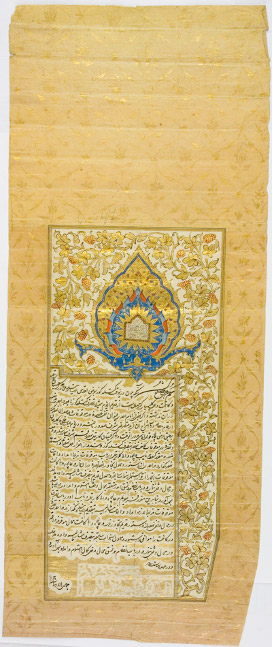
Figure 2. Pd-47, 1708, Illuminated Documents, p. 192. Reprinted by permission of the Korneli Kekelidze National Centre of Manuscripts.
Also, the rulers of Kartli and Kakheti and the catholicoses of Georgia employed their sovereignty concerning the country’s internal affairs. However, Iran formally controlled Georgian agricultural affairs. Iran was truly paving the way for the dominance of Oriental landownership in Georgia, which ultimately ensured its incorporation in the Iranian empire.
Bilingual documents express the loyal policy of Iranian shahs to Georgian high priests, implying administrative rights and liberties. In Persian texts, more privileges are given to the Church than in the Georgian counterparts of the same documents. This expressed ‟compromise policy” connected with the reign of Rostom Khan (Khosrow Mirza), king of Kartli (r. 1633–58) and, later, king of Kartli-Kakheti (r. 1648–56), the son of King David XI (Daud Khan), the last representative of the Bagratid royal dynasty of Kartli. Rostom Khan made the clergy faithful and assigned them a payment. He executed this inner strategy under Iranian orders.[10]
Among these unique bilingual documents, which were issued by Christian sovereigns and allowed by the shah’s supremacy, the most distinguished is the document Ad-1837[11] (1670; see Figures 4 and 5) kept at the National Centre of Manuscripts. The document deals with confirming that lands located near the river Mtkvari belong to the main Christian Church, Svetitskhoveli Cathedral, and liberating the inhabitants of this region from taxes. The document is a scroll, the main text of which is in Georgian while the Persian text is a summary of the deeds written in calligraphic nastaʿliq in irregular lines. The upper part of the document is illuminated. It contains images of the twelve Apostles in the upper margins; the Holy Trinity in the middle; and Archil II, who was the king of Kakheti (r. 1664–75), and Domenti III, who served as a catholicos from 1660 to 1675, in the lower margins.
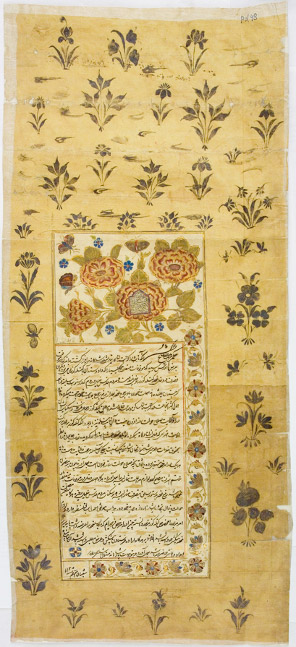
Figure 3. Pd-48, 1713, Illuminated Documents, p. 197. Reprinted by permission of the Korneli Kekelidze National Centre of Manuscripts.
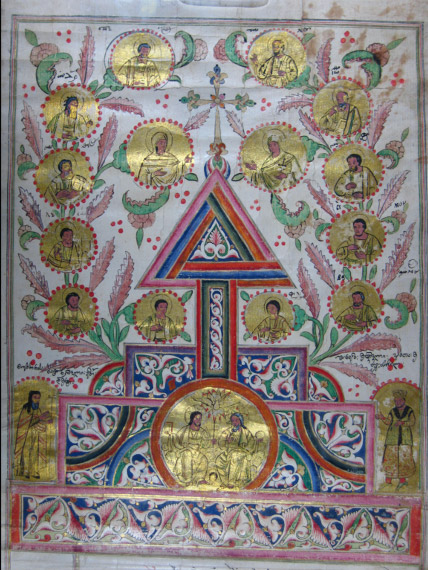
Figure 4. Ad-1837, 1670, Illuminated Documents, pp. 88–89. Reprinted by permission of the Korneli Kekelidze National Centre of Manuscripts.
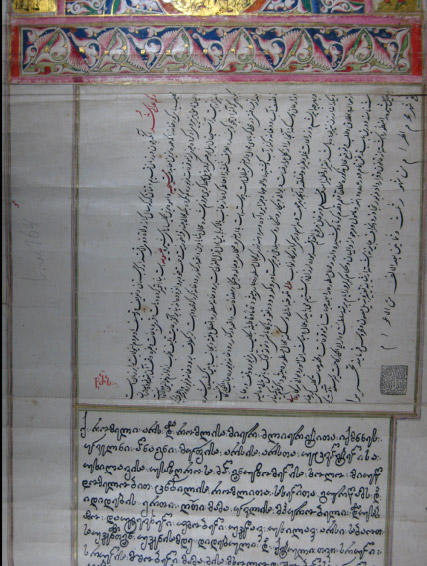
Figure 5. Ad-1837, 1670, Illuminated Documents, pp. 88–89. Reprinted by permission of the Korneli Kekelidze National Centre of Manuscripts.
Through its architectonics and inspiration, the document clearly illustrates different aspects of Iranian-Georgian political, social, and juridical relations. The illumination could be considered of a mixed type, Persian and Georgian: borders and ornaments reflect Oriental influence while figures are essentially Christian (Apostles and secular and religious authorities), their expression and manner also remaining essentially Georgian.
2. Persian Gospel Manuscript Written in Georgian Script
Apart from the above historical documents, religious issues and the relations of Christian Georgia with its neighboring Islamic states are equally reflected in other manuscripts. One of them is of particular interest: the Persian Gospel translation, transliterated in Georgian script and kept at the Korneli Kekelidze National Centre of Manuscripts (S-16). The Georgian scholar Makar Khubua devoted a special linguistic study to this manuscript.[12]
The main tactic in the gradual Islamization of the population was to have ethnic Georgian priests reading Gospels in Persian and Ottoman (Turkish) languages in Christian Churches of the eastern and western principalities of Georgia (Kartli-Kakheti and Meskheti). Georgian worshippers did not consider listening to Gospels in these languages as an act of suffering, and the writing of Gospels in Oriental languages became a good means of widely spreading the languages and Islamic beliefs in the regions. Subsequently, through these languages, alongside activities performed in “compromise policy,” Islam would have been widely spread.[13] Our article deals specifically with these issues.
The Bible was extensively translated into Persian from the fourteenth century onward, notably from Greek (fourteenth century), Hebrew (fourteenth or fifteenth), and Syriac (fifteenth). Translations from Hebrew and Greek were made from the sixteenth century onward[14] under the Safavid monarchs, by the order of Shah Abbas I (r. 1588–1629), Shah Sultan Husayn (r. 1694–1722), and Nader Shah Afshar (r. 1736–47).
At the request of Shah Sultan Husayn, the Gospel translation from Arabic into Persian with matching glosses was completed in 1703. The text of this manuscript was published in 1996 by Rasul Jaʿfariyan in Tehran.[15] The translation and the translator, Sayyid Mir Muhammad Baqir ibn Ismaʿil Khatunabadi, will be discussed below.
In 1739, after his victory in India, Nader Shah ordered his court historian, Mirza (Mohammad) Mahdi Khan Astarabadi, to make translations of the Bible from Hebrew, Christian, and Muslim manuscripts into Persian.[16] In turn, Mirza Mahdi engaged two other scholars, Mir Mohammad Maʿsum Hosayni Khatunabadi and his son ʿAbd-al-Gani. They were the son and the grandson of Sultan Husayn’s translator, Mir Muhammad Baqir. This group was joined by Jewish rabbis and Carmelite missionaries. In 1741, the translation of the Bible was completed. Nadershahi Gospel (Nader Shah’s Gospel) was published in a scholarly edition by Rasul Jaʿfariyan from a manuscript that had been preserved in Golestan Palace and according to him was the original version. Jaʿfariyan concludes that ‟the completed translation was really done by the Iranians.”[17]
The Persian Gospel manuscript in Georgian script is related to and directly follows the translation by Muhammad Baqir. On the other hand, it is also related to the version composed during Nader Shah’s reign. This version apparently presents the original copy of the text transliterated in Georgian.[18] Certainly, there is a direct connection between these two Persian texts, and we intend further studies of this issue and their detailed textual relations to the manuscript in the Georgian script.
Let us return to the four Gospels translated in Shah Sultan Husayn’s period by the imam and scholar Sayyid Mir Muhammad Baqir ibn Ismaʿil Khatunabadi (d. 1715). We rely on Dennis Halft’s research concerning this translation.[19]
Khatunabadi completed his translation in 1697, including a detailed introduction, extensive marginal glosses on the Gospels, and a short conclusion, all of which are written in Persian. Besides his own essays, Khatunabadi is known for his translations of various Arabic works into Persian, most of them made at the request of Sultan Husayn. Among all his treatises and translations, the glossed Persian translation of the Gospels remains Khatunabadi’s only work related to Christianity.[20]
The Persian version closely follows the Vatican revision of the Arabic Vulgate. Khatunabadi’s glossed translation of the Gospels can be regarded as the result of the interreligious scholarly connections between Christianity and Islam of that period. As the Shi‘ite scholar relates in his introduction, he relied in his glosses on several “books and treatises” (Pers. kutub va-rasāʾil) by Christian authors. Khatunabadi’s marginal glosses show that various Christian books in printed and manuscript form were available to Shi‘ite scholars in Isfahan in the late seventeenth century. Khatunabadi’s glossed translation demonstrates once more a Shiʿite-Catholic history of Persian translations of the Bible in pre-modern Iran.[21]
The undated manuscript of the Persian Gospel translation in Georgian script preserved at the Korneli Kekelidze National Centre of Manuscripts (S-16) belonged to the royal family. Most scholars date it to the seventeenth or eighteenth century.[22]
2.1 Description of the Manuscript
The manuscript comprises 358 pages. Its dimensions are 29.5 by 19.5 centimeters. The material is paper with watermarks. The watermarks show images of a rider with a sword and of a horse. The manuscript has a leather and embossed wood cover, with the crucifixion in the middle and the Evangelists on the borders (Figure 6).
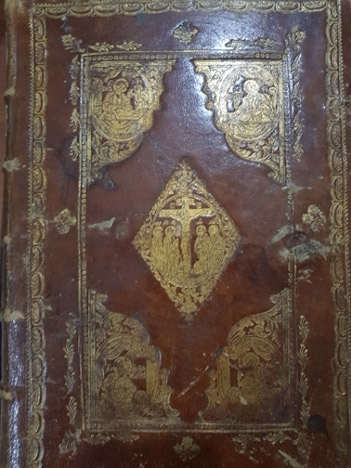
Figure 6. S-16, seventeenth or eighteenth century, book cover. Reprinted by permission of the Korneli Kekelidze National Centre of Manuscripts.
The manuscript contains all four Gospels, but it lacks the last part of Mark’s Gospel. The handwriting is in the Georgian script, Mkhedruli. The ink is black, with the titles written in red ink. Some Persian phonemes are specifically expressed by Persian letters and signs (ﻉ, ﺀ).[23]
2.2 Decorations
Each page of the manuscript is spotted with gold ink. On the borders, spots are more frequent, serving as settings for the text. Golden rhomboid figures are used for ornament on some pages, and blue figures are also found (Figures 7 and 8).
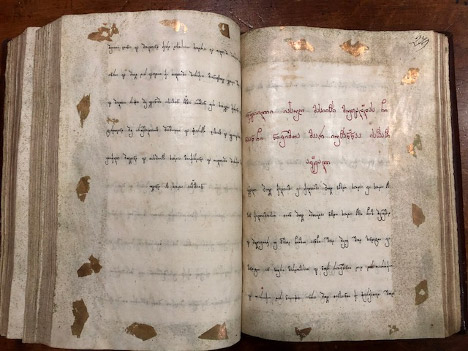
Figure 7. S-16, seventeenth or eighteenth century, 278v-279r. Reprinted by permission of the Korneli Kekelidze National Centre of Manuscripts.
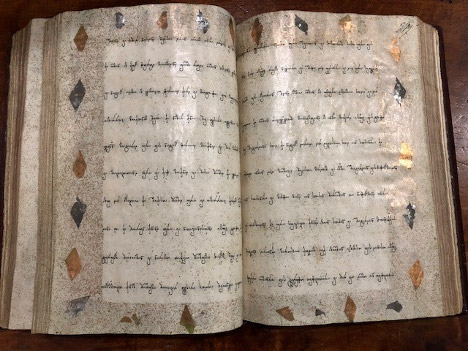
Figure 8. S-16, seventeenth or eighteenth century, 216v-217r. Reprinted by permission of the Korneli Kekelidze National Centre of Manuscripts.
The original version of the manuscript is preserved at the Saint Petersburg Institute of Oriental Manuscripts (C-268), in the collection of the Georgian Prince Teimuraz Bagrationi (1782–1846).[24] According to the preface of the original version, the Gospel was translated from Arabic into Persian during Nader Shah’s reign. The manuscript written in Isfahan was taken to Tbilisi and given its final form in Georgian.[25]
During the sixteenth to eighteenth centuries, Georgians held important positions in the governmental and cultural spheres of Safavid Iran. Many distinguished Georgian intellectuals significantly contributed to the development of science and art. Of the seventeenth-century intellectuals, Parsadan Gorgijanidze (1626–96) is the most eminent figure from the second half of the century. He served in the Safavid administration as deputy governor (na’eb-e daruga) of Isfahan and royal chamberlain (ishik-aqasi); he was also a historian.
Gorgijanidze carried out the work later fulfilled by scholars Marie-Félicité Brosset (1802–80) and Johannes Albrecht Bernhard Dorn (1805–81) by compiling Persian historical data concerning Georgia. Facts mentioned in Georgian sources that have reached us are attested to in Gorgijanidze’s History of Georgia. This work contains rich material, which is especially important for researching existing historical works and elucidating many issues in twelfth- and thirteenth-century Georgian history. Gorgijanidze undertook various creative activities: he rewrote and made an editorial work of the Georgian translation of Shahnameh, Rostomiani; translated Jam’e‘Abbasi, the Muslim lawbook; and compiled a Georgian-Persian-Arabic dictionary. Thus, Gorgijanidze was an author with mutual Georgian and Persian cultural traditions, and undoubtedly, he had many followers who remained in Isfahan and followed in his creative footsteps. Hence, the Georgian transliteration of the Persian Gospel might have been the result of scientific activities (particularly, translations) originally established by Gorgijanidze.[26]
Makar Khubua, who explored this manuscript systematically, considered it an exact transliteration of the original version kept at Saint Petersburg. The manuscript is important for the study of Iranian-Georgian cultural, religious, and linguistic relations. In addition, it clearly illustrates Georgian and Persian handwritten bookmaking traditions: decorated borders, floral ornaments, an adorned cover, and pictures of the Evangelists and Jesus Christ.
According to Khubua, the composition of the Persian Gospel manuscript in Georgian script exactly follows the manuscript PK-55/90 from the Qajar collections of the Korneli Kekelidze National Centre of Manuscripts, dated 1697. The manuscript presents a text of the Persian Gospel translated from Arabic at the request of Shah Sultan Husayn. The preface states that the translation was done according to the shah’s order by Ibn Ismaʿil al-Husayn Muhammad Baqir.
Manuscript PK-55 contains the four Evangelists’ narratives, with additional glosses. On the borders are lengthy and brief comments which also contain headings of particular passages. In some places, only the heading is highlighted or only the comment is left untitled (the birth of Jesus Christ, the revelation of Jesus Christ to the apostles, etc.).
The manuscript comprises 152 pages. Its dimensions are 20.6 by 13.9 centimeters. It is written on a thin, glossy, yellowish Oriental paper in a refined nastaʿliq. The headings are in red; the text is embedded in a colored frame.[27] See Figure 9.
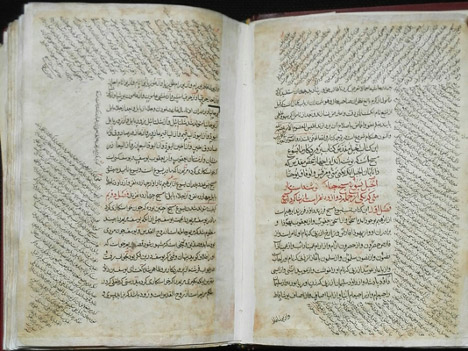
Figure 9. Persian Gospel, PK-55/90, seventeenth century, pp. 4v–5r. Reprinted by permission of the Korneli Kekelidze National Centre of Manuscripts.
Conclusion
The Persian Gospel manuscript in Georgian script raises a number of important issues concerning the comprehension of the Christian Holy Book by a Muslim author, textual interrelations of the Persian translation with the transliterated version, linguistic peculiarities of the text (phonetic, morphologic, syntactic), and the requirements and trends of a specific historical period, among others. Thorough consideration and detailed analysis of the above issues will be possible after both versions of the manuscript have been critically compared. We are planning this research for the future.
Thus, the Persian Gospel manuscript written in Georgian script vividly reveals a picture of Iranian-Georgian religious, political, and cultural relations in the seventeenth and eighteenth centuries conditioned by historical realities, and it requires further comprehensive religious-cultural study.
[1]On these periods of Iranian history, see multiple articles in Encyclopaedia Iranica, notably Rudi Matthee, “Safavid Dynasty,” Encyclopaedia Iranica, 2008, iranicaonline.org/articles/safavids. See also Homa Katouzian, Iranian History and Politics: The Dialectic of State and Society (London and New York: Routledge/BIPS Persian Studies Series, 2003), 128; and J. R. Perry, “Afsharids,” Encyclopædia Iranica, 2011, www.iranicaonline.org/articles/afsharids-dynasty.
[2]On the historical, social-political, economic, and cultural state of Eastern Georgia (Kartli) in the sixteenth to the eighteenth centuries, see Mamia Dumbadze, ed., Sakartvelos istoriis narkvevebi (Essays on History of Georgia, vol. 4, Georgia from the Beginning of Sixteenth Century till 30th Years of Nineteenth Century) (Tbilisi: Sabtchota Sakartvelo, 1973), particularly chapters 4–8, 225–385. On the historical-cultural interrelations of Safavid Iran and Georgia, see Valerian Gabashvili, Kartuli feodaluri cqobileba XVI-XVII saukuneebshi (The Georgian Feudal Order in the XVI-XVII Centuries) (Tbilisi: Metsniereba, Akademia, 1958); David M. Lang, “Georgia and the Fall of the Safavi Dynasty,” BSO(A)S 14 (1952): 523–39; Dumbadze, Sakartvelos istoriis narkvevebi, 312–33, 398–412; and Keith Hitchins, “History of Iranian-Georgian Relations,” Encyclopaedia Iranica, vol. X, fasc. 5 (New York: Bibliotheca Persica Press, 2001), 460–97. See also the following publications with a complete list of bibliographic references: Grigol Beradze and Karlo Kutsia, “Towards the Interrelations of Iran and Georgia in the 16th-18th Centuries,” The Near East and Georgia, vol. III (Tbilisi: Publishing House Chronograph, 2002), 160–76; and David Katsitadze, Iranis istoria III-XVIII saukuneebshi (History of Iran in the III-XVIII Centuries) (Tbilisi: Horosi XXI, 2009), 367–459.
[3]Teimuraz II of the Bagrationi dynasty was the king of Kakheti (eastern Georgian kingdom) from 1733 to 1744 and the king of Kartli from 1744 till 1762.
[4]Dumbadze, Sakartvelos istoriis narkvevebi, 398–412.
[5]On the relations between Christians and Muslims, see Rudi Matthee, “The Politics of Protection: Iberian Missionaries in Safavid Iran under Shāh ‘Abbās I (1587-1629),” in Contacts and Controversies between Muslims, Jews and Christians in the Ottoman Empire and Pre-Modern Iran, ed. Camilla Adang and Sabine Schmidtke (Würzburg, Germany: Ergon, 2010), 245–71; and Rudi Matthee, “Sulṭān Ḥusayn, Shah of Persia,” in Christian-Muslim Relations: A Bibliographical History, vol. 12, Asia, Africa and the Americas (1700-1800) (Leiden, Netherlands: Brill, 2018), 278–91.
[6]The Svetitskhoveli Cathedral (literary, the Cathedral of the Life Pillar) is an Orthodox Christian cathedral located in the ancient capital of Georgia, Mtskheta, to the northwest of Tbilisi. The Svetitskhoveli Cathedral has long been one of the principal Georgian Orthodox churches and is among the most venerated places of worship in the region. The cathedral’s exterior architecture is a well-preserved example of decorations typical of the eleventh century.
[7]Vladimer Puturidze, Sparsuli istoriuli sabutebi saqartvelos cigntsatavebshi (Persian Historical Documents in the Libraries of Georgia) (Tbilisi: Academy of Sciences of the Georgian SSR, 1961), book 1, part 1, 43–45; Makar Khubua, Sakartvelos muzeumis sparsuli firmanebi (Farmans and Hoqms of the Museum of Georgia) (Tbilisi: Academy of Sciences of Georgian SSR, 1949), 8–9, 135; and Darejan Kldiashvili, ed., Mokhatuli istoriuli dokumentebi Sakartvelos sidzveltsatsavebidan (Illuminated Historical Documents from Georgian Depositories) (Tbilisi: Favorit Print, 2011), 168.
[8]Vladimer Puturidze, Sparsuli istoriuli sabutebi saqartvelos cigntsatavebshi (Tbilisi: Academy of Sciences of the Georgian SSR, 1965), book 1, part 3, 34–35; Khubua, Sakartvelos muzeumis sparsuli irmanebi, 50–52; and Kldiashvili, Mokhatuli istoriuli dokumentebi, 192.
[9]Puturidze, Sparsuli istoriuli sabutebi, 1965, book 1, part 3, 71–73; and Kldiashvili, Mokhatuli istoriuli dokumentebi, 197–98.
[10]On Georgian-Persian bilingual documents, including editions, characterization, and analysis with a complete list of references, see Beradze and Kutsia, “Towards the Interrelations,” 173–74. For a recent publication on Georgian-Persian historical documents, see Nana Kharebava, Bamberger Orientstudien, vol. 10, Regesten der zweisprachigen georgisch-persischen Urkunden der Safavidenzeit (Bamberg, Germany: University of Bamberg Press, 2017). On the relations of the Georgian Church with Iranian authorities in the light of new Georgian-Persian historical documents, see Tamaz Abashidze, “Samghvdeloebis saxelze gatsemuli kartul-sparsuli sabutebi” (“Georgian-Persian Documents Issued to the Clergy”), in The Near East and Georgia, vol. 10 (Tbilisi: Ilia State University Press, 2017), 181–88.
[11]Vladimer Puturidze, Kartul-sparsuli istoriuli sabutebi (Georgian-Persian Historical Documents) (Tbilisi: Academy of Sciences of the Georgian SSR, 1955), 311–15; and Kldiashvili, Mokhatuli istoriuli dokumentebi, 88–90.
[12]Makar Khubua, “Sakartvelos sakhelmtcifo muzeumis S-16 khelnatceris gramatikuli analizisatvis” (“About the Grammatical Analysis of the Persian MS S-16 (E) in the State Museum of Georgia”), Bulletin of the Academy of Sciences of the Georgian SSR, no. 9 (1943): 931–34; and Makar Khubua, “XVII-XVIII ss. Otkhtavis sparsuli khelnacerebi Sakartvelos muzeumshi” (“XVII-XVIII Centuries Persian Gospel Manuscripts in the Museum of Georgia”), in Works of the Institute of Linguistics, Series of Oriental Languages, vol. 1 (Tbilisi: Academy of Sciences of Georgian SSR, 1954), 163–85. See also Helen Giunashvili and Tamar Abuladze, “Sur l’études des manuscrits de l’Évangile perse des 17-18ème siècles écrits en géorgien” (paper presented at Les interactions entre chiʻites duodécimains et chrétiens: histoire, théologie, littérature, Institut Catholique de Paris, 11–13 April 2018).
[13]The manuscript of the Turkish (so-called “Tatar”) Gospel translation transliterated in the Georgian script and dated to 1739 is kept at the museum in Zugdidi (West Georgia) with catalogue no. 89:4. There is also a copy made in 1881 and kept in Tbilisi at the National Archive of Georgia, fund 1446, no. 401.The manuscript contains 405 pages and is written in the script named Mkhedruli. The manuscript has been investigated by Murman Beltadze, “XVIII saukunis turkulenovani dzegli kartuli transkriptsiit” (“XVIII Century Turkish-Language Monument in Georgian Transcription”), Works of Tbilisi State University 121 (1967): 125–64. See also Tsisana Abuladze, “Türkische Texte in georgischer Transliteration” (paper presented at The Evolution of Turkic in Iran, Mainz, 17–19 December 2004); and Joakim Enwall, “Turkish Texts in Georgian Script: Sociolinguistic and Ethno-Linguistic Aspects,” in Turcology in Mainz, ed. Hendrik Boeschoten and Julian Rentzsch (Wiesbaden, Germany: Harrassowitz Verlag, 2010), 135–47.
Noteworthy is the existence of the analogical type (of Persian) translation of the Gospel transliterated in Armenian script. According to the colophons of Matenadaran manuscripts N 8492 and N 3044 (eighteenth century), the Gospel was translated into Persian to be used by Armenians living in Eastern Transcaucasia. The Gospel was translated into Persian for Christians living in that area, and its execution in Armenian script was for preserving religious (Christian) and national identity of those Armenians who lived among Iranians in that region. See Hasmik Kirakosian, “On the Colophons to the Two Persian Gospels Manuscripts in Armenian Script (Matenadaran N 8492 and N 3044),” Etchmiadzin (Էջմիածին) 5 (2018): 47–62; and Hasmik Kirakosian, “The Armeno-Persian Handwritten Gospel from Gandzak in the Context of Interreligious Polemic Translations,” Bulletin of Matenadaran, no. 29 (2020): 287–97.
[14]On the history of the Bible’s translation into Persian, see Kenneth J. Thomson and Fereydum Vahman, “BIBLE vii. Persian Translations of the Bible,” Encyclopaedia Iranica, 2016, iranicaonline.org/articles/bible-vii.
[15]Rasul Jaʿfariyan, ed., Tarjama-ye anājil-e arbaʿa: Bā taʿliqāt wa tawżiḥāt-e Mir Moḥammad-Bāqer Ḵātunābādi (1070–1127 A.H.) (Tehran: Nuqta, AH 1375/1996), xi.
[16]Roberto Gulbenkian, “The Translation of the Four Gospels into Persian,” Neue Zeitschrift für Missionswissenschaft 37 (1981): 35–57. Reference on p. 45.
[17]Rasul Jaʿfariyan, ed., Enjil-e nāderšāhi: Mattā, Marqos, Luqā, o Yuḥannā (Tehran: Elm, AH 1388/2009), 23; Kenneth J. Thomas and Fereydun Vahman, “BIBLE iii. Chronology of Selected Persian Translations of Parts or the Whole of the Bible,” Encyclopaedia Iranica, 2016, iranicaonline.org/articles/bible-iii; and Khubua, “XVII-XVIII ss. Otkhtavis sparsuli khelnacerebi,” 171.
[18]Khubua, “XVII-XVIII ss. Otkhtavis sparsuli khelnacerebi,” 171.
[19]Dennis Halft, “The Arabic Vulgate in Safavid Persia: Arabic Printing of the Gospels, Catholic Missionaries and the Rise of Shīʿī Anti-Christian Polemics” (PhD diss., Free University of Berlin, 2016), 161–64, 168–71, 206–8.
[20]Halft, “Arabic Vulgate,” 161–64.
[21]Halft, “Arabic Vulgate,” 168–71.
[22]Alexandr Antonovich Tsagareli, Svedenija o pamjatnikax gruzinskoi pisjmennosti (Data on Georgian Written Monuments), part I (Sankt-Peterburg: Tipografija Imperatorskoi Akademii Nauk, 1886), 27; Nikolay Yakovlevich Marr, “Opisanie persidskogo rukopisnogo Chetveroevangelija,” Zapiski Vostochnogo otdelenija Imperatorskogo Russkogo arxeologicheskogo obshchestva, III (1889): 377–81; Ekvtime Semyonovich Taqaishvili, Opisanie rukopisey “Obshchestva rasprostranenija gramotnosti sredi gruzinskogo naselenija,” vol. I (Tiflis: Izdanie Upravlenija Kavkazskogo Uchebnogo Okruga, 1902), 121–22; Makar Khubua, “Hamza sparsul metqvelebashi” (“Hamza in Persian Speech”), Bulletin of the Academy of Sciences of the Georgian SSR, no. 9–10 (1947): 675–79, reference on p. 678; Khubua, “XVII-XVIII ss. Otkhtavis sparsuli khelnacerebi,” 171; and Olga Suladze, “Kartuli asoebit shesrulebuli sparsuli otkhtavis zogierti grafikuli, ortografiuli da fonetikuri tavisebureba” (“Some Graphic, Orthographic and Phonetic Peculiarities of the Persian Gospel Written in Georgian Script”), in Jevanmardi, vol. II (Tbilisi: Metsniereba, 1979), 38–44, reference on p. 39.
[23]Makar Khubua, “O persidskix rukopisjax v gruzinskoi transkripcii,” Soobshchenija Akademii Nauk Gruzinskoi SSR 2 (1941): 301–7, reference on pp. 304–7; Khubua, “Hamza sparsul metqvelebashi”; Khubua, “XVII-XVIII ss. Otkhtavis sparsuli khelnacerebi,” 171–75; and Suladze, “Kartuli asoebit shesrulebuli,” 39–40.
[24]Teimuraz Bagrationi (Batonishvili), the son of the last king of Georgia, Giorgi XII. He was a writer, translator, scientist, and public and political figure. He lived in Iran (1803–10) and Saint Petersburg (from 1810 until his death). He was a member of the Saint Petersburg Academy of Imperial Sciences, Danish Royal Antiquarian Society, Asiatic Society of Paris, and French Academy of Fine Arts. In collaboration with Marie Brosset, he contributed to the development of Kartvelian (mostly historic) studies in Saint Petersburg. A great part of his rich collection of manuscripts and books was donated to the Saint Petersburg Asiatic Museum, from which another part was then sent to Georgia.
[25]Khubua, “O persidskix rukopisjax,” 305; Khubua, “Hamza sparsul metqvelebashi,” 678; Khubua, “XVII-XVIII ss. Otkhtavis sparsuli khelnacerebi,” 171; and Fati Sebua, “Barresiye tarjomehaye enjil dar zaban e farsi, resale baraye daryaft e darajeye doktori” (Ph.D diss, Daneshgah e Tehran, daneshkadeye adabiyat va ‘olum e ensani, AH 1388/2009), 324–32.
[26]Jamshid Giunashvili, “Gorgijanidze, Parsadan,” Encyclopædia Iranica, 2016, iranicaonline.org/articles/gorgijanidze-parsadan; and Helen Giunashvili and Tamar Abuladze, “Georgia and Iran: Historical-Cultural Context and Tendencies of Georgian Renaissance (According to Georgian Handwritten Heritage),” Iranian Studies (forthcoming).
[27]For a fuller description of the manuscript, see Tsisana Abuladze, Rusudan Gvaramia, and Maya Mamatsashvili, Korneli Kekelidzis saxelobis xelnatcerta institutis arabul, turkul da sparsul xelnatcerta katalogi (A Catalogue of Arabic, Turkish and Persian Manuscripts of the Korneli Kekelidze Institute of Manuscripts) (Tbilisi: Metsniereba, 1969), 89; and Seyfollah Modabber Chaharborji, Fehrest e tafsiliy e noskh e khatiy e farsi enstitu Kekelidzeye e Teflis, jeld e avval (Tehran: Markaz e chap va entesharat e vezarat e omur e xareje, AH 1383/2004), 145–46.

